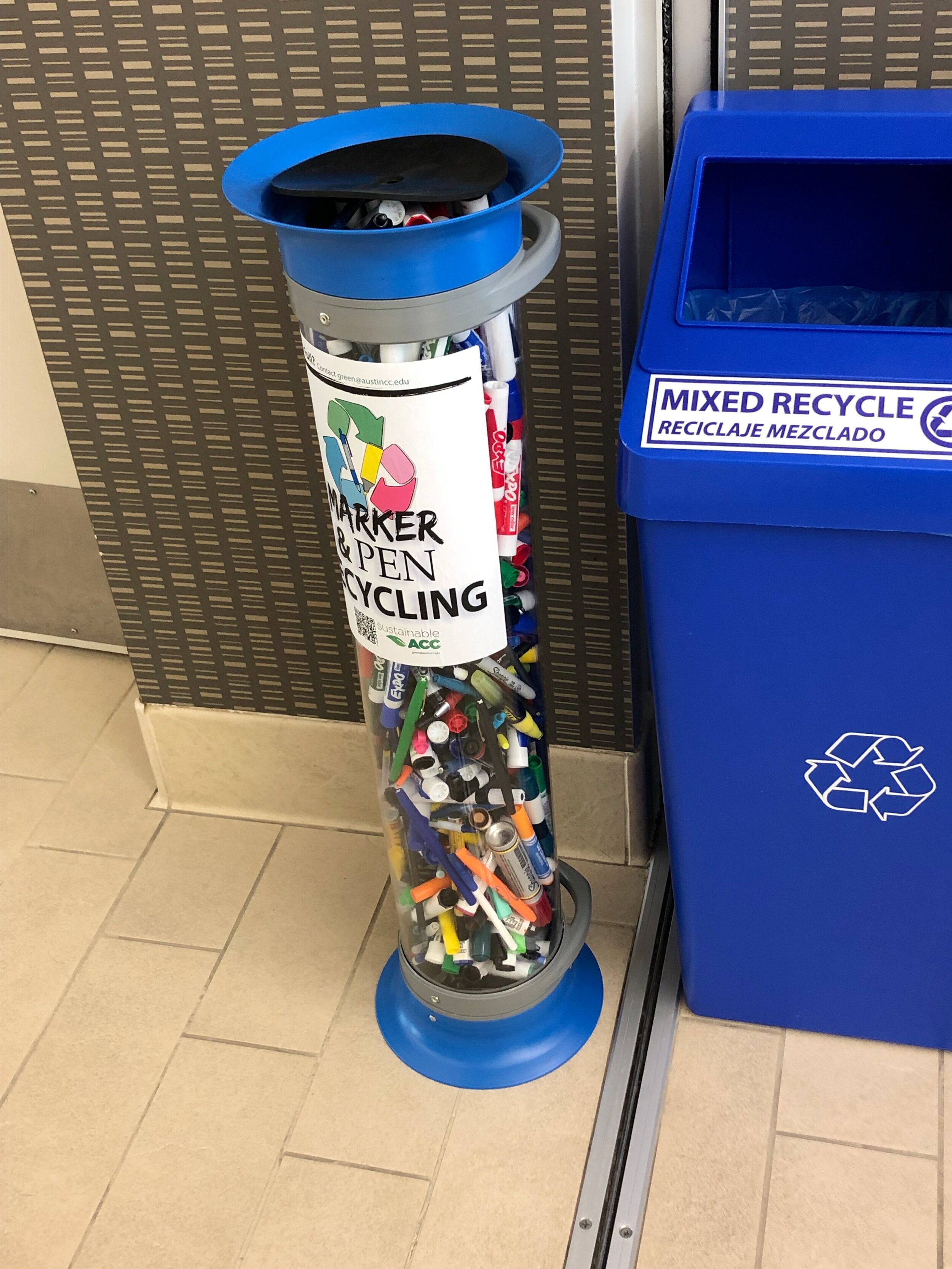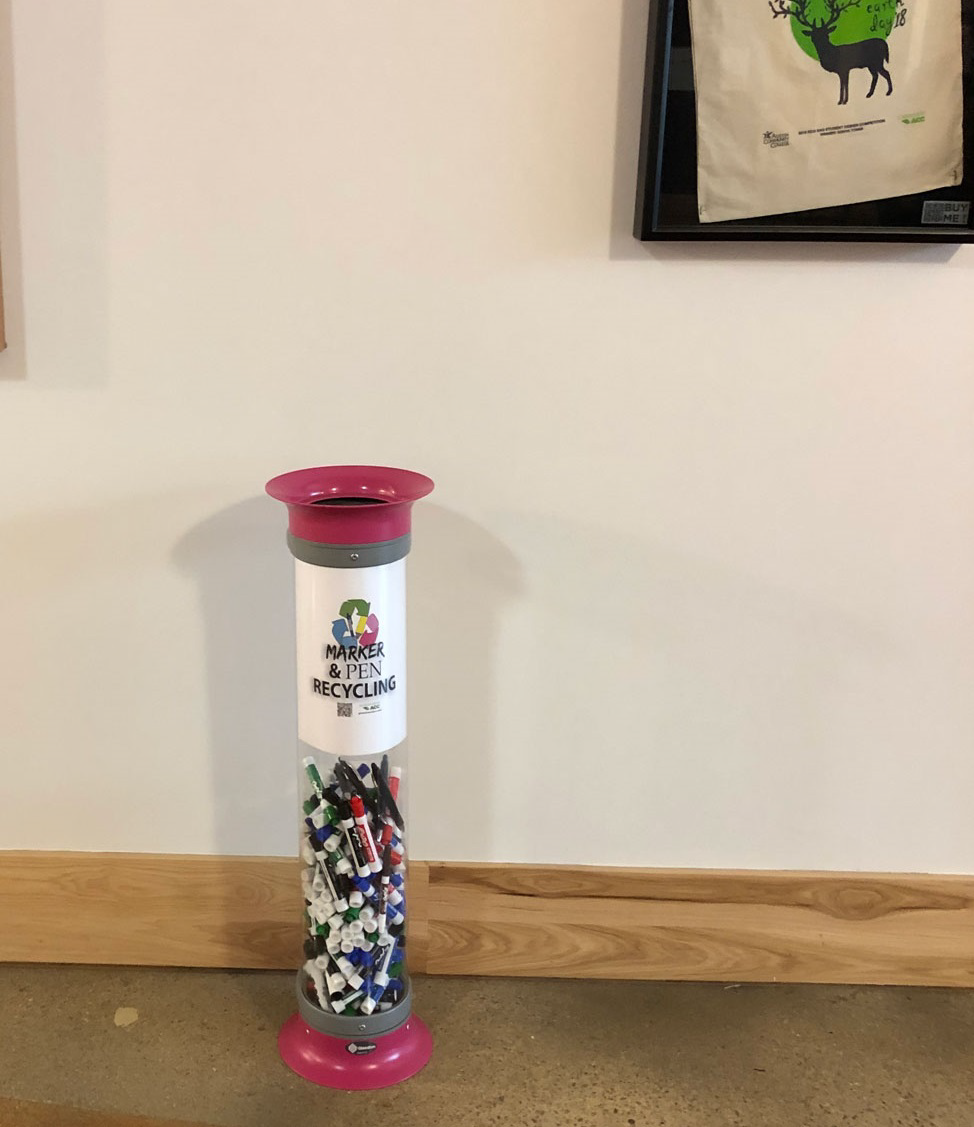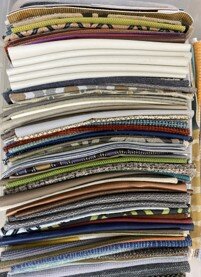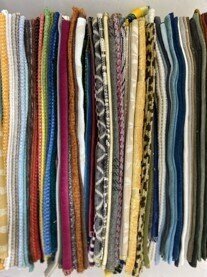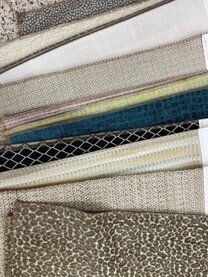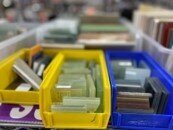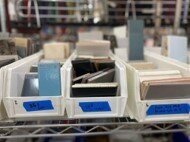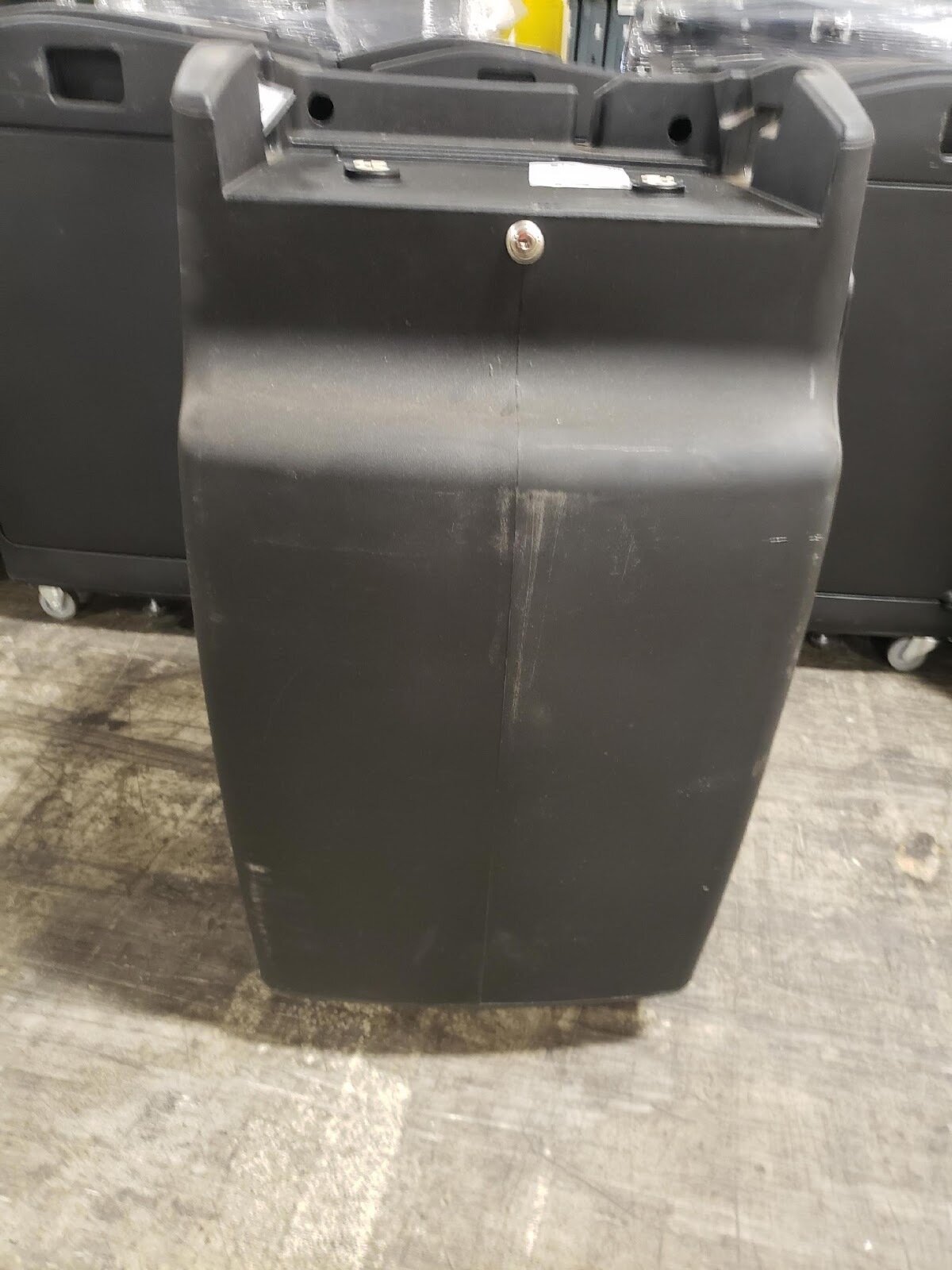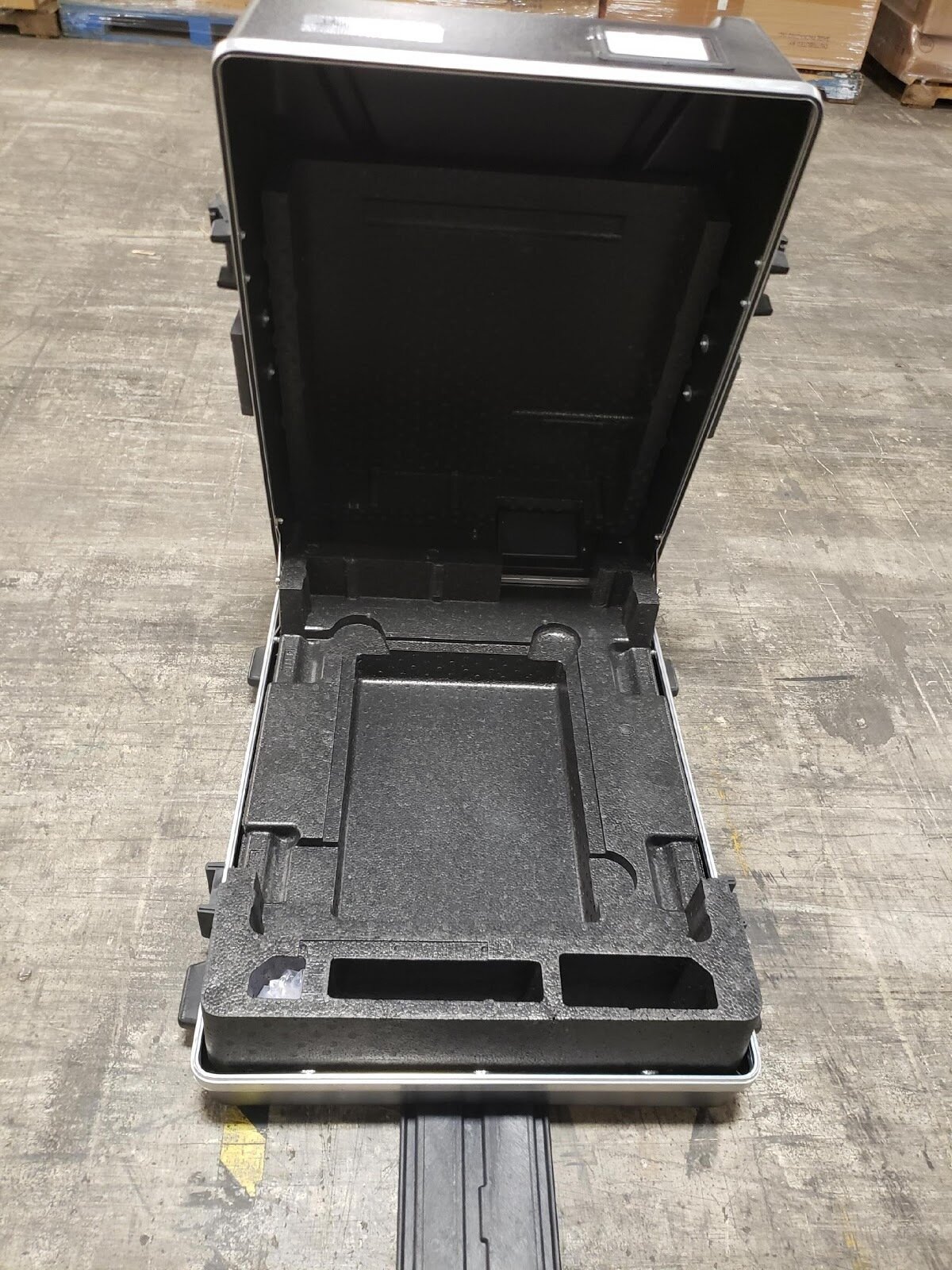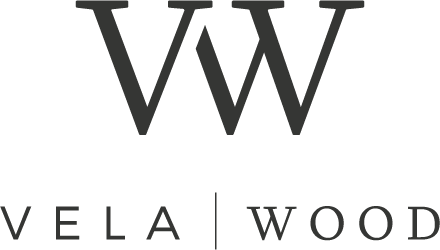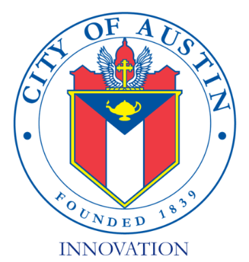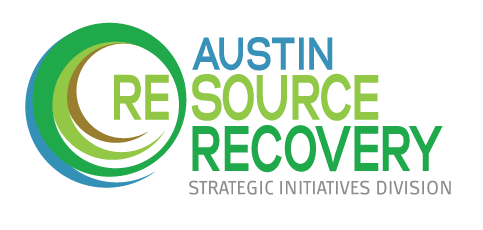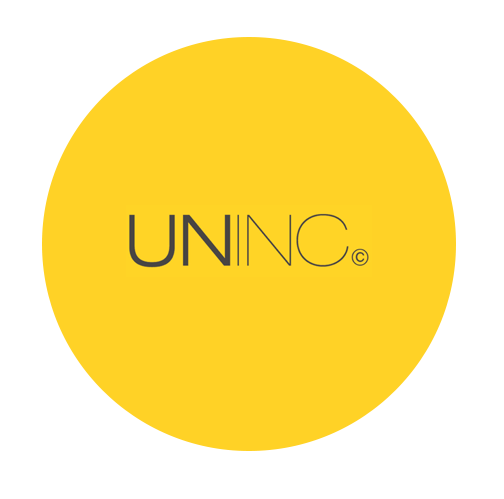2021 [Re]Verse Pitch
Congratulations to our 2021 Innovation Fellows!
This year’s winners, known as Innovation Fellows, developed business ideas using another businesses’ ‘waste’.
The Innovation Fellows will receive prizes valued up to $9,000, and participate in a four-month accelerator program to develop their ideas.
Reuseful Earth (Plant Baxter)
By: Jordan Smith
Repurposing Super Sacks from Austin Eastciders and reclaimed wood from the construction industry to create container gardens (Plant Baxters)
DV Designs
By: Vincent Marsella and Deepak Chandra
Repurposing spent grain from Fierce Whiskers Distillery to create beverage coasters
Biochar Filter Socks
By: Petey Peterson and Seth Nyer
Repurposing spent grain from Fierce Whiskers Distillery and used wooden pallets to create ‘wattle socks,’ which help prevent soil erosion and capture toxins from storm-water runoff
Lolas Classic Babies
By: Lolita Rodriguez and Lucero Valle Archuleta
Repurposing decorator fabric samples from Austin Creative Reuse to create bow ties
2021 Competitors
Click on the Business or Idea name below to learn more.
These descriptions come directly from Applicant’s submissions, and includes both intents to compete and finalist submissions.
+ Art Phone Case Design
Goal is to come up with a product using the phone cases as a decoration, function would be to bring awareness to waste from new tech.
- Material(s) to Use: Phone cases (Smartish)
+ Austin Sporeticulture
Using distillery spent grain slurry and woven polypropylene sacks, Austin Sporeticulture will create a hands on permaculture curriculum targeted at children 10-13 years old. Using both classroom and on-site field trip modalities, Austin Sporeticulture will introduce students (of all ages) through programs facilitated by the public library, local organizations such as the Dougherty Arts Center, Parks and Rec., Zilker Botanical Gardens, Lady Bird Wildflower Center, community gardens and public access spaces delineated by building codes, to the causes and solutions of urban waste and contaminated space.
For the first few years, after soil testing from designated waste spaces has been done, soil remediation will take the form of no till agriculture, using spent grain mixed with balancing pH material, local compost, mycorrhizae fungi and cover crops. For students to experience quicker gratification in the growing and harvesting process, the recovering earth will be covered by raised beds made from more local waste, in the form of wooden pallets, sometimes lined with the polypropylene sacks. A potting mixture of partially dehydrated spent slurry, alkaline local soil (with lime or clay components), mycorrhizae from local sources of origin, and other local organic matter (including compost from local tables) will provide the fertile earth for these first table to farm gardens which will include: vegetables, wildflowers, mutually beneficial plantings such as the Three Sisters (corn, beans and squash) and traditional crops indigenous to this region.
Excellent general curriculums exist for this age range, specifically the Junior Master Gardener program from TAMU. We are not reinventing the wheel, but making an Austin specific study. This curriculum will include a history of Austin enumerating the contributions of a diverse spectrum of inhabitants. As an exercise in permaculture, it will be an evolving experiment, adding or deleting material as layers of our rich history reveal hidden or forgotten wisdom.
- Material(s) to Use: Woven polypropylene super sacks (Austin Eastciders) and Spent distillers grain slurry (Fierce Whiskers Distillery)
+ The Drunk Baker
Our solution is to open a bakery and make baked goods using the spent grain from Fierce Whiskers Distillery. Specifically, we would make the spent grain into flour and use this to make bread, brownies, cookies, and banana bread to sell. We would also make dog treats out of the spent grain to appeal to our customers who own dogs. As well as serving baked goods, we would also sell prepared, sustainable flour that would be perfect for home-bakers as well as businesses and other restaurants. Regarding our value proposition, we would be offering a healthy alternative to standard flour. Specifically, replacing regular flour with spent grain in a loaf a bread will double the fiber content, increase protein content by 50%, increase the essential amino acid content by 10%, and decrease the calories by about 7%.
In addition to offering a healthy option, utilizing spent grain as an alternative to regular flour provides a unique, nutty flavor. Additionally, our business model is encompassed with the goal of sustainability, where the spent grain from Fierce Whiskers Distillery would usually end up in the landfill and produce methane, we would be reducing the waste. Finally, we are offering a nice, dog-friendly atmosphere that would fit perfectly in Austin, TX.
- Material(s) to Use: Spent distillers grain slurry (Fierce Whiskers Distillery)
+ Biochar Filter Socks / Locoal
Locoal will divert pallet waste from landfills and overburdened recycling center, convert the wood-waste into wood chips and clean energy, and create a superior wattle sock solution. Locoal will strategically place filtration socks to prevent soil erosion and capture toxins from storm-water runoff, significantly reducing the negative environmental impact to 7500 miles of waterways surrounding the great Austin area. Biochar Filter Socks are an innovated approach to an existing and demanded product, and the solution to two major local and global problems.
- Material(s) to Use: Spent distillers grain slurry (Fierce Whiskers Distillery) and wood pallets
+ DV Designs - Spent Grain Pulp Products
Our vision is to prevent the 6 billion pounds of spent grain(SPG) from being thrown into the landfill by finding innovative and essential ways to reuse it. In our early stages, we believe that the spent grain from Fierce Whiskers Distillery(or any SPG waste) can be turned into any agglomerated material. Our baseline thesis is that the spent grain can be turned into paper pulp or in this case, “spent grain pulp” which can then be molded into a vast array of products such as coasters, packaging material, egg cartons, 6 pack holders etc. The options are endless.
We believe the value of pursuing this comes in various forms. The first being that the material is free and that removing the material from the supplier diverts it from landfills. Second, we believe that the logistics of this process can create greater value by reducing the cost of transporting large amounts of spent grain. Alternatively, paper molded products can be made thousands of miles from their final destination which induce large transportation costs as well as large environmental impacts associated with shipping these disposable products great distances. In this case, in Austin, there are 58 craft breweries plus many distilleries, who all produce spent grain. This means that, within a hundred miles, there is more than enough waste being thrown into landfills to both build a product/array of products off of, as well as enough to divert in substantial enough quantity to make a lasting impact in Austin's landfills.
In our preliminary prototypes we have successfully created coasters and plates from the samples of spent grain from Fierce Whiskers. In the prototype pictures it can be seen that these initial prototypes closely mimic cork coasters but are made entirely from SPG. Because of their composition these coasters(and subsequent products) can be composted after use. These products are environmentally harmless, degrade safely, and help reduce production of virgin material sourced products.
- Material(s) to Use: Spent distillers grain slurry (Fierce Whiskers Distillery)
+ Use2 Austin Materials Exchange - ATXMX
Austin Materials Exchange, ATXMX, intends to capitalize on Austin’s unique culture of creatives, entrepreneurs and progressive business owners and create a business, entrepreneurial, and creative hub for Austin’s emerging material exchange markets. We plan to start the project by creating a By-Product Showroom that will mitigate key barriers by raising awareness, developing relationships, and making the materials exchange concept tangible and compelling.
While we plan to have a digital platform, a physical By-Product Showroom is the backbone of our low risk, organic growth plan. We believe seeing, touching and interacting with business by-products will ignite an awareness and passion for reuse in ways a digital interface cannot. We have chosen to populate the showroom with by-products that have clear creative reuse appeal and can be sold directly to consumers or small-scale entrepreneurs. Products we have already sourced include:
Materials will be neatly displayed with accompanying information explaining frequency and quantities available as well as suggested uses. We want to make visible the reality that a vibrant ecosystem of by-products is currently being landfilled or recycled. We want to showcase materials that inspire creativity and spark the imagination.
A successful showroom will naturally become a hub for businesses and entrepreneurs interested in growing the materials exchange ecosystem. We have already been approached by the sustainability director of a local company looking for ways to divert byproducts to users. We expect such inquiries to continue, creating opportunities, over time, to monetize brokering services, connect entrepreneurs with resources, and collaborate with similar projects around the world. An entrepreneurial business service hub, funded in part by the By-Product Showroom, is the long term goal of ATXMX and we believe will emerge naturally from the By-Product Showroom.
- Material(s) to Use: Decorator fabric samples (Austin Creative Reuse), Architectural samples (Austin Creative Reuse), Woven polypropylene super sacks (Austin Eastciders), and Flammable distillation byproduct (Fierce Whiskers Distillery)
+ One of One Coasters
One of One Coasters plan on utilizing the 2,800 pounds of architectural samples and 2,500 pounds of decorator fabrics being collected a month at Austin Creative Reuse (ACR) to create high-quality coasters at an affordable price point and to use the fabrics for origami style packaging.
Our process will consist of separating larger sized architectural samples from smaller/fragmented ones and using a circular saw to cut larger samples into smaller sizes. While for smaller/fragmented samples, liquid nails adhesive will be used to combine the samples into the desired shape and/or size. Afterwards, a fast-drying polyurethane clear finish will be applied only to the wooden coasters to make it waterproof and heat resistant. As for the stone/concrete and combination (mixed materials) coasters, ArtResin will be applied to give it the same effect. Then after the coating has dried, we will have two team members conduct quality checks of the coasters before packaging.
Simultaneously, the decorator fabric samples will be going through a separate process which the fabrics will first go through a quality check process to make sure they are the desired size and damage free. If there are damaged fabrics or smaller samples that require sewing together, a sewing machine will be used. Given that many of the decorator samples are large enough to wrap a set of 4 coasters, it will take on average 3 hours (assuming no major fabric adjustments needed) for two team members to simultaneously sort the fabrics and wrap/package 15 sets of coasters.
Since our team of 14 are comprised of retired family members and friends with backgrounds in woodwork and tailoring, there will be no labor costs associated with creating these products. And with our lean manufacturing process and low material and packaging costs, we can offer stylish, refined coasters (packaged in a set of 4) for 20-25% under competitive market pricing. Additionally, at the pace we estimate we will execute at, we project that we can create 18,000 coasters/4,500 coaster sets and 4,500 fabric packaging a year which will help reduce a significant amount of material wastes from Austin Creative Reuse (ACR).
- Material(s) to Use: Decorator fabric samples (Austin Creative Reuse) and Architectural samples (Austin Creative Reuse)
+ Freedom Valises
Provide emergency cases with various storage to disabled, chronic ill and emergency personnel. Casters available for disabled autonomy.
- Material(s) to Use: Woven polypropylene super sacks (Austin Eastciders) and Plastic bins and cases (R2 Corporation)
+ got worms? / Commercial Vermiculture Sacks
The solution is to create a vermicompost processing center, or worm farm, to handle diverted food waste up to a municipal scale. The products will be used by commercial entities “heavily invested into soil quality and production” around the Austin MSA. Using slightly modified Super Sacks, provided by Austin Eastciders (#12-15/mo), the business will fill each sack with compostable materials, worms, and food waste until vermicast products can be harvested. (Worm farms are not unique concepts and can have very profitable margins with positive communal impact, so the business will follow successful models to build and scale.)
For the initial growth stages, a small-to-medium, enclosed, climate-controlled warehouse is required for operating until business is established. The SuperSacks are forklift and storage rack compatible, which allow these bags to be individually-controlled ecosystems and vertically stacked on racks to maximize space. These slightly modified bags will have machine-sewn ventilation screens added for aeration and to prevent diseases. The sacks already have in-pour and out-pour valves, which are compatible with existing processing machinery, or can be loaded or unloaded by hand.
Inputs to the business model are free to very low cost. Ideally, partnerships with the City of Austin, Parks Dept, TreeFolks, Central Texas Food Bank, Austin Zoo, restaurants, lawn care companies, horse/cow ranchers, big box retails, etc… will allow us to use their byproducts or waste to fuel the business. Utilities for power, water, heat, will be the main costs in addition to overhead. Packaging and marketing expenses will also be a large financial consideration.
After 60-90 days (up to 120+ days) of strategic care and management, the various vermicast products should be cycling on harvesting waves for sale and distribution. The product quality and processes will need to be refined, but will result in more efficiencies and higher quality. Employees can be entry level with minimal training and succeed with worm farming employment. The goal is to start with a lean sized team of employees at fair wages, and with strategic growth, add more employment opportunities. This business has seasonalities for planting seasons, so business will have flexibility to pivot cycling patterns.
- Material(s) to Use: Woven polypropylene super sacks (Austin Eastciders)
+ Joey Ro
Mix & match accessories for pets & their people: exploring sustainable material sourcing/production alternatives!
- Material(s) to Use: Woven polypropylene super sacks (Austin Eastciders) and Phone cases (Smartish)
+ Lolas Classic Babies
Just one non profit center in Austin Texas collects about 2,500 lbs/month of decorative fabric samples, these samples are small and almost unusable. Lolas Classic Babies products specifically the bow ties require a very small amount of fabric to be produced, which we believe is a perfect solution for the next step in the value circle of the mentioned material in the circular economy pitch program. Our bow ties sizes are universal in design to be wearable by babies, adults, and even dogs. Each swatch produces up to three bow ties where each booklet typically holds 50 swatches, producing 150 bows each. That converts into about an average of $1800 in revenue.
- Material(s) to Use: Decorator fabric samples (Austin Creative Reuse)
+ Plant Baxter
The Plant Baxter is an innovative solution that enables customers to grow their own produce with less space, waste & money. It is a hanging container garden made from reclaimed materials. A woven polypropylene bag is suspended from a wooden frame (see photo) that can be hung on a wall, from a patio railing, from the ceiling, set on the ground or stacked with add-on stands (to be developed & sold at a later stage in the process). Its dimensions of 14” W x 30” L x 9” D make it perfect for growing a large variety and amount of produce. It is lightweight at 1.5 lbs, stores flat and is extremely durable - we estimate that it will last 10 to 20 years if cared for properly. We intend to release instructional videos through our website and social media platforms to aid customers with use/care of the Plant Baxter. These videos will be a part of paving the way to a healthier, happier and more food secure Austin.
The polypropylene bag is made from an Austin Eastcider’s byproduct - the Super Sack. The wood for the frame will be sourced from Craig Parker Homes and other local building/renovation companies’ waste streams. Our team has developed an efficient way to reuse the Super Sack. The sack is made from large sheets of woven polypropylene that are sewn together and four heavy duty, permeable plastic straps. The Super Sack can easily be disassembled and then cut and cauterized into new patterns, providing enough material to make four Baxters. The pattern is then sewn into the appropriate shape with one strap sewn in as a drainage strip and for reinforcing strength. Four pieces of wood will be milled and cut to the appropriate size, protected with a beeswax polish, and then screwed together to make a frame. It will come with rope for installation.
- Material(s) to Use: Woven polypropylene super sacks (Austin Eastciders) and Reclaimed wood from home renovations or scraps from new builds
+ Polypropylene Woven Tote Bags
To create a solution to the wasted plastic bag issue, we decided to create reusable tote bags out of polypropylene sacks and fabric scraps. The polypropylene provides for a durable base to this tote bag, and it can end up holding much more weight than a plastic bag. In addition to this, our tote bags would be customizable, sustainable, versatile, inexpensive, comfortable, spacious, and reusable. On top of this base layer of polypropylene, we sewed on leftover fabric scraps from Austin Creative Reuse. Research indicates that a reusable tote bag can save over 22,000 plastic bags from being wasted.
Our true purpose is to try to minimize waste in the Austin environment and encourage the community members to support our tote bags, a symbol of an initiative that we are taking to create a sustainable Austin community.Research indicates that 78% of people feel better knowing that they are being goods which are being produced in a sustainable manner. Our product seeks to build upon that. We not only want to give people high quality goods that they are happy using but we want to produce these goods in a sustainable way and help save the environment by reducing excess waste generated by plastic bags which are not recycled.
- Material(s) to Use: Decorator fabric samples (Austin Creative Reuse) and Woven polypropylene super sacks (Austin Eastciders)
+ Sweet Pup Dog Snacks
A line of white-labeled dog snacks gives these businesses a compelling way to easily bring additional value to their customers. Perhaps the very simplest approach, for example, would be including a complimentary bag of custom-branded dog treats with every visit/appointment--however, the more original a Sweet Pup customer’s approach, the better the ROI would likely be.
Additionally, Sweet Pup benefits Austin in various ways, which would factor into product marketing efforts: 1) using Fierce Whiskers’ spent grain (or much of it), 2) using as well Austin Eastciders’ bulk sugar bags for spent grain transport, 3) contributing to Austin’s growing reputation as a culinary startup hub by using a shared local “kitchen on demand” for food preparation & snack baking alongside other food entrepreneurs, 4) employing part-time help (as revenue later permits), and 5) providing a means for small local pet-related businesses to increase the value they provide (and thereby strengthen their customer retention rates and bottom line).
Additionally, Sweet Pup would nurture Austin’s civic side by enriching the dog-loving, no-kill pet culture Austin enjoys, and Sweet Pup would also explore dog snack donations to local shelters and related nonprofits as business circumstances allow.
- Material(s) to Use: Woven polypropylene super sacks (Austin Eastciders) and Spent distillers grain slurry (Fierce Whiskers Distillery)
+ REVISION GOODS
REVISION GOODS is on a mission to divert materials from the landfill and give new life and meaning to waste. It plans to achieve this by making it easier for existing makers of home goods to produce with upcycled materials, as well as elevating consumers’ perception of upcycled goods with carefully curated offerings of beautiful, functional and affordable home products that consumers covet. REVISION GOODS envisions a new way for how we make and buy things, steering consumer behavior toward a world with less waste.
REVISION GOODS sells curated, limited batch runs of home decor products for consumers who care about styling their homes and who want to feel good about their purchases. All products have an upcycle/circularity component, but the main value proposition for consumers is strong design, function, and affordability, appealing not only to the sustainability-minded. There is transparency about the makers/designers and the materials diverted, thereby educating about and reinforcing circularity and a stronger connection between consumers and the items they buy.
The products include textiles like pillow covers and placemats, stone/wood products like coasters and trays, and decorative art like paintings and wall sculptures. The price range varies from $20 for smaller items like coasters (providing easy entry points for consumers) to hundreds of dollars, depending on the materials, designs, and makers. The attached PDF shows some possibilities with prototypes made with fabric/architectural samples from ACR, as well as art produced from upcycling other materials.
For makers and designers, the main proposition is a relatively easier and lower risk process for trying upcycling of materials. We do this by providing a sales channel they’d be proud to associate with and test consumer demand with, promotion of their brand and work, alignment with a sustainability-focused cause and community. We can also help source materials and order upfront for product collaborations which reduces their cash flow risk. For makers who already upcycle materials, we provide an additional sales and marketing channel, as well as a community of people with a similar mission. The more we assist each other’s work, the more upcycled products can become more mainstream.
- Material(s) to Use: Decorator fabric samples (Austin Creative Reuse) and Architectural samples (Austin Creative Reuse)
+ Scrap Synthesis
Scrap Synthesis connects food waste to compost facilities both on and off site through a business model designed for individuals and intended for industry. Scrap Synthesis brings attention and innovation to the biodegradable waste endemic to the global food industry. In the pursuit of widespread education and systemic change, Scrap Synthesis will create viral systems of waste diversion and compost creation one company at a time.
Scrap Synthesis will launch with two primary business models: on-site and off-site compost gardens. On-site gardening is the main intention as it is most cost-effective and community oriented.
Free consultation services with each potential client will address all relevant components introduce a process of food excess reproduction into company practices. Businesses will need to adjust certain processes and attitudes related to excess food, and Scrap Synthesis will be a mentor throughout that transition. On-site compost requires a small plot of land with an area of at least 4X4’. It will require basic equipment and labor with investment dependent on the amount of compostable byproduct created. There is tremendous marketing opportunity and incentive for employees and customers to be hands-on in making a positive environmental impact. The process of biodegradation yields fresh produce available for companies to utilize either for personal use, donation or resale.
Some establishments do not have the means of supporting on-site compost. In these cases Scrap Synthesis will be the connector to pre-established compost gardens around Austin, many of which are in need of food waste to support growth. With the intention of mitigating waste in all forms, Scrap Synthesis plans to connect with unused transportation (via rental services or purchasing used vehicles) to transport compost and cut costs. Transportation will be the primary cost of off-site composting. Off-site gardens would maintain a strong connection to host-companies and maintain open access for customers and employees to bring personal compost, volunteer, and receive fresh produce from. Education must be at the core of this program as composting is an involved and coordinated process. It is critical that those involved be knowledgeable on the natural process as not to interfere with it.
- Material(s) to Use: Food waste
+ Socially Immersed
Goal is to make tents, jackets, quilts, or an outdoor shower paired with a portable shower head for the homeless. Cases could be furniture.
- Material(s) to Use: Decorator fabric samples (Austin Creative Reuse), Architectural samples (Austin Creative Reuse), Woven polypropylene super sacks (Austin Eastciders), and Phone cases (Smartish)
+ Spent Grain Bakery and Goods
Turning spent grain into flour. Dehydrate spent grain and turn into flour and use wet spent grain for other baked goods.
- Material(s) to Use: Spent distillers grain slurry (Fierce Whiskers Distillery)
+ Workwear Workshop
Products: WorkWear WorkShop repairs, upcycles, and sells clothing otherwise headed to landfills. Product line focus is high quality, durable and fashionable: denim, workwear, and outerwear. Using textile samples from Austin Creative Reuse (ACR) and other sturdy fabrics, we mend, alter, and create new upcycled garments. Providing unique and stylish apparel while raising awareness of, and working to improve, the challenges of environmental pollution and poverty. 4 tiers of products will be offered to a full range of consumer demographics:
Tier 1 Resale: Undamaged jeans and workwear, ready to be donated or sold at low prices.
Tier 2 Patch & Mend: Vintage clothing, minimally damaged jeans and workwear. Repaired and patched with ACR textile samples and denim scraps. Sold at affordable, thrift store prices.
Tier 3 Artful Alterations: Moderately damaged or out-of-style apparel, creatively altered and restyled using ACR samples and scrap fabrics. Unique, one-of-a-kind garments sold at mass market & high street retail prices.
Tier 4 Fashion Upcycle: “Brand new” vests and jackets made from denim & ACR samples. Original, limited designs constructed in traditional and contemporary workwear patterns. Sold at high end & luxury price points.
Value Proposition: Stylish and durable apparel for ethical consumers to support cascading positive impacts - Mend their community, Alter societal constructs, and Upcycle ecosystems:
- Environmental: Reduce, Reuse, Recycle, Downcycle, and Upcycle Textiles. Pollution Reduction, Ecological Restoration
- Economic: Donations to charities, poor and homeless. Help reduce poverty.
- Social: Promote Human rights, equity, and education. Improve fashion industry practices. Encourage compassion, awareness, creativity, and action
Solutions: Reduce the amount of textiles going to landfill & incinerator by taking them out of the waste stream, into the market. Provide affordable clothes to poor and homeless people. Provide ways for consumers to help the environment and promote human welfare through the purchase of well known designer brands and unique hand-made fashions. Each purchase keeps textiles out of the waste stream and supports donations to people in need of clothing. Keep clothing in the USA rather than shipping it elsewhere, reducing impact on export resources. Provide fulfilling jobs at fair wages. Improve the lives of workers with education, equity/profit-sharing, healthcare, and volunteer opportunities
- Material(s) to Use: Architectural samples (Austin Creative Reuse)
2021 Material Suppliers
Austin Community College
Austin Community College collects around 600 pieces/month (pre-COVID) of used markers, pens and pencils. The material is shipped to Terracycle to be downcycled.
Austin Eastciders
Austin Eastciders generates 16-20 sugar ‘super sacks’ monthly. The super sacks are made of woven polypropylene, originally containing up to 2,000 lbs. of sugar.
Austin Creative Reuse
Austin's non-profit creative reuse center collects near 2,500 lbs/month of decorator fabric samples, of varying material, size and color.
Austin Creative Reuse
Austin's non-profit creative reuse center also accumulates some 2,800 lbs of architectural samples monthly.
Fierce Whiskers Distillery
A whiskey distillery in southeast Austin generates spent distillers grain slurry, a monthly mix of 112,000 lbs. of grain, mixed with 40,000 gallons of water.
Fierce Whiskers Distillery
A whiskey distillery in southeast Austin also generates up to 800 gallons/month of flammable distillation byproduct, typically a collection of acetone, ethanol, methanol, and acetaldehyde.
R2 Corporation
A local electronics recycler receives plastic bins and cases that were used to house electronics are received on a variable basis. Cases vary in size and shape, but often come on casters.
Smartish
This phone case company based in Austin and Los Angeles collects up to 25,000 returned or end-of-life phones cases each month. Styles and sizes vary.
2021 Event Details
The 2021 Opening Material Supplier Pitch Event was held on virtually February 2nd.
The 6th Annual [RE]verse Pitch Competition will continue through July where the Innovation Fellows will take part in a four-month accelerator program to develop their ideas.
During the virtual accelerator program, each team will receive mentorship, training, and community support while they further develop their circular business idea.
The accelerator will culminate in the teams presenting these ideas to a cohort of investors as part of the City’s inaugural Circular Austin showcase on July 28, 2021.
![[Re]Verse Pitch Competition](http://images.squarespace-cdn.com/content/v1/55b690b5e4b0491deed57b65/1441323468581-HNJ986C17Q91AC4QDHSI/REverse_logos_white_web.png?format=1500w)
